#19th-century architectural styles
Text

Hôtel Potocki, 75008 Paris
#art#design#architecture#history#luxury lifestyle#style#luxury house#luxury home#stairs#grand staircase#mansion#townhouse#paris#hotel potocki#19th century#poland
700 notes
·
View notes
Text

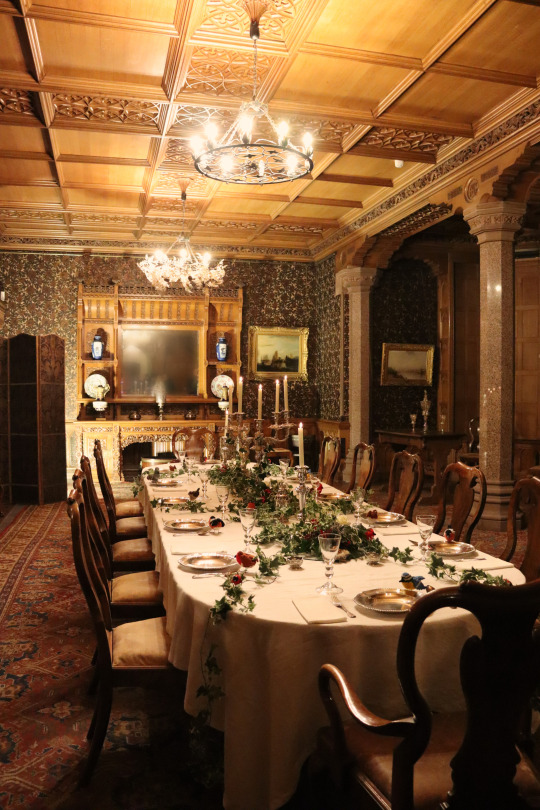




Victorian Christmas at Tyntesfield 🎄
#cottagecore#cottage core#cottage aesthetic#victorian#victorian era#edwardian#antique#1890s#1800s#tyntesfield#victorian aesthetic#victorian architecture#late 1800s#victorian age#19th century#christmas#christmas aesthetic#vintage#vintage style#dark academia#dark acadamia aesthetic#dark academism#art#architecture#victorian art#aesthetics#fairmaidnelly
817 notes
·
View notes
Photo
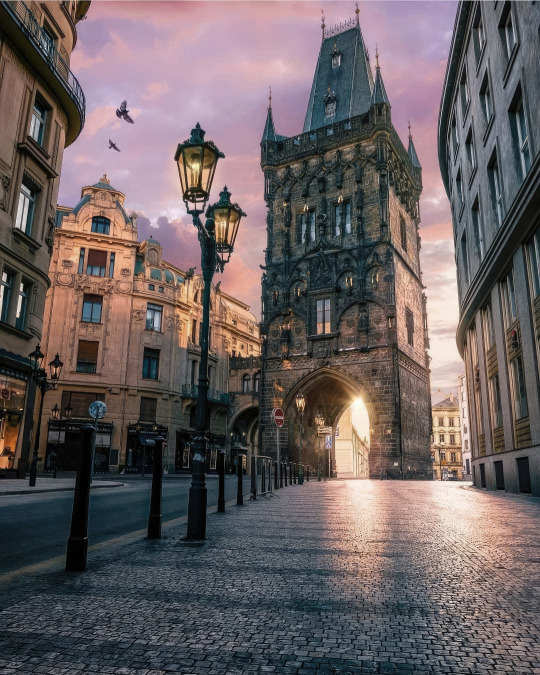
Prague, Czech Republic
Photo by momentsofgregory
#Steampunk#Steam punk#Steampunk Art#Art#Design#Steampunk Design#Steampunk Style#Architecture#Cityscape#Prague#19th century
2K notes
·
View notes
Text

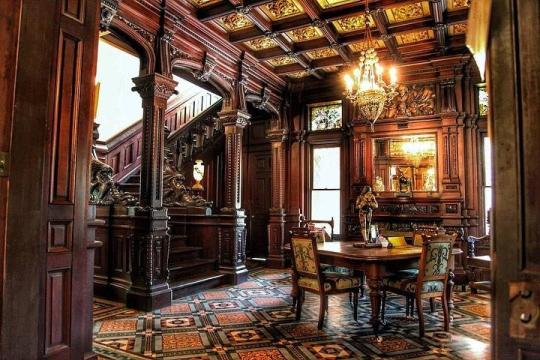



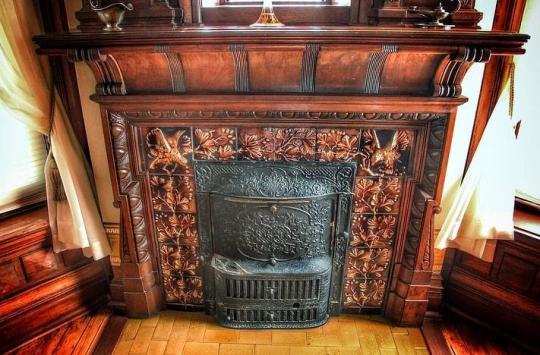
This is the Shakespeare Chateau, located in Saint Joseph, Missouri.
📸: @shakespeare_chateau
#dark academia#light academia#classical#academia aesthetic#escapism#academia#books and libraries#classic literature#books#architecture#1800s#19th century#victorian era#style#Shakespeare#chateau#saint joseph#missouri#royal core#cottage core#aesthetics#mood#vibe#tumblr
334 notes
·
View notes
Text

𝕿𝖍𝖊 𝕽𝖚𝖎𝖓𝖘 𝖔𝖋 𝕯𝖊𝖙𝖗𝖔𝖎𝖙
𝖂𝖎𝖑𝖑𝖎𝖆𝖒 𝕷𝖎𝖛𝖎𝖓𝖌𝖘𝖙𝖔𝖓𝖊 𝕳𝖔𝖚𝖘𝖊, 𝕭𝖗𝖚𝖘𝖍 𝕻𝖆𝖗𝖐, 𝕯𝖊𝖙𝖗𝖔𝖎𝖙
#William Livingstone House#𝕯𝖊𝖙𝖗𝖔𝖎𝖙#photography#photo#ruins#ruin#decay#victorian style#victorian era#gothic victorian houses#goth aesthetic#gothic aesthetic#goth architecture#gothic architecture#xix century#19th century
87 notes
·
View notes
Text

The Tuileries Palace, mid-19th century
Paris
#Tuileries#palace#Paris#France#Tuileries Palace#empire style#empire#napoleonic era#french empire#first french empire#19th century art#2nd empire#2nd French empire#French art#art#neoclassical art#neoclassical#pretty#interior#architecture#painting#chandelier#photography
34 notes
·
View notes
Text

Toronto in the 1900s was a different city from the one we know today.
The center of business had moved west of the historical Town of York site and the skyline was undeveloped.
The tallest structures were the Temple Building at 10 stories and the Trader’s Bank Building at 15 stories.
A new downtown to the west of Yonge and King Streets was built. The City of Toronto moved into a new City Hall, built at the head of Bay Street at Queen Street.
Much of this new downtown was destroyed in the Great Toronto Fire of 1904, but it was quickly rebuilt, with new taller buildings.
South of downtown, the railways dominated most of the lands. A new viaduct was built to carry the main lines and eliminate the many at-level crossings.
A single Union Station was built to replace the several railway stations of the rail lines. It sat empty for a while over disagreements between the government and the rail companies.
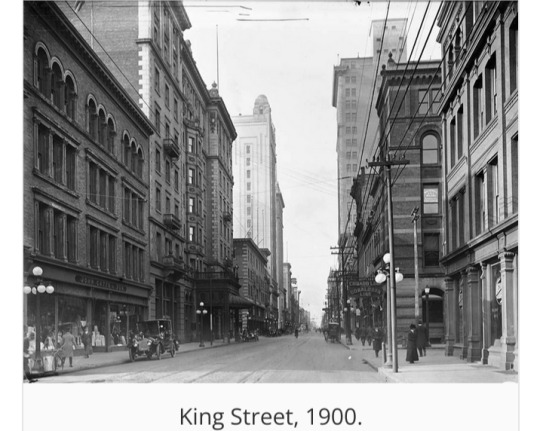
In the late nineteenth century, Toronto welcomed the rise of Victorian architecture, as well as many of its revival styles.
This style of architecture was thought to be more modern, unique and creative than its successor, characterized by steep gabled roofs, round angles, towers, turrets and dormers, shapely bay windows, stained glass, centric carved woodwork, and bright colored paneling.
This style lent itself well to narrower lots, and thus, Victorian-style housing was most abundant in the city’s traditionally middle-class neighborhoods where individual properties were smaller, most notably Cabbagetown, Trinity-Bellwoods, Parkdale, and The Annex.
These neighborhoods held some of the largest collections of Victorian houses in North America.
Specifically, houses constructed in the Annex developed an individual iteration of the Victorian style, called the “Annex Style House.”
This style contained a variety of diverse and eclectic elements borrowed from many different styles.
Most distinctively, these houses were built of a mix of brick and sandstone, turrets, domes, and decorative ornamentation.
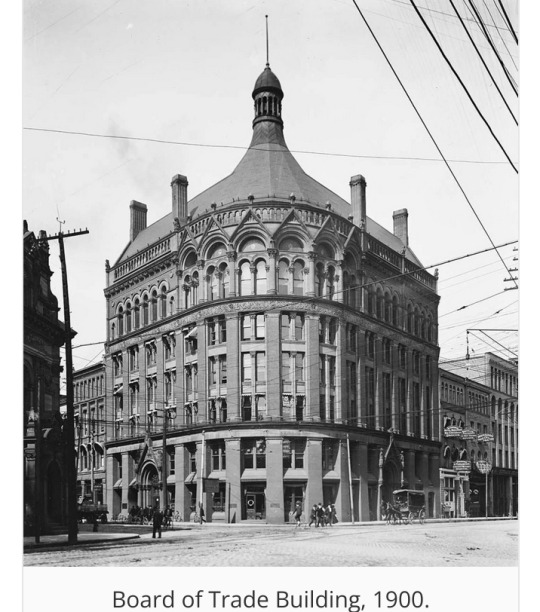
The city received new European immigrant groups beginning in the late 19th century into the early 20th century, particularly Germans, French, Italians, and Jews.
They were soon followed by Russians, Poles, and other Eastern European nations, in addition to the Chinese entering from the West.
As the Irish before them, many of these migrants lived in overcrowded shanty-type slums, such as “the Ward,” which was centered on Bay Street, now the heart of the country’s Financial District.
As new migrants began to prosper, they moved to better housing in other areas, in what is now understood to be succession waves of settlement.
Despite its fast-paced growth by the 1920s, Toronto’s population and economic importance in Canada remained second to the much longer-established Montreal, Quebec.

The Great Depression of the 1930s reversed the employment trend, with approximately one-fourth of the Toronto population unemployed and caused severe financial problems for suburban Toronto.
Capital debt payments could not be met and expenditure on public services—sewage and piped water supply in places remote from the lake, for example—had to be postponed.
However, World War II’s demands for war supplies and soldiers soon changed the employment picture.
Following the war, and into the 1960s, times were prosperous throughout North America.
Toronto’s economy diversified and boomed, greatly altering the cultural and spatial pattern of the city.
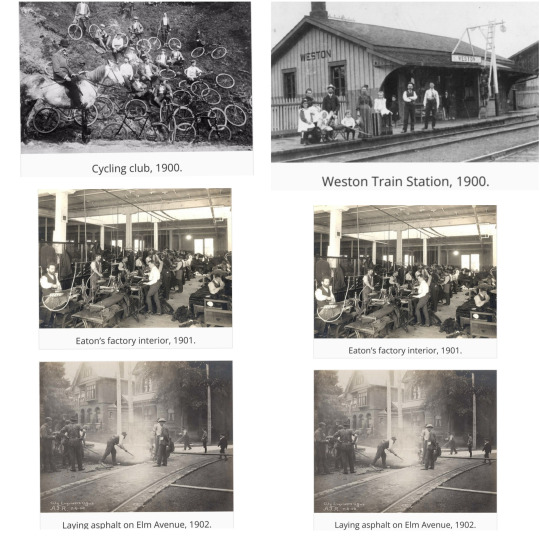
Other factors after the war included the baby boom, demand for single-family dwellings, and the proliferation of the automobile.
Suburban sprawl was assisted by the increase in road networks and freeways, thereby consuming some of the best agricultural land in the region.
By 1953, a reorganization of local government had been created, along with the Corporation of Metropolitan Toronto, in an attempt to control development in the surrounding regions.
Suburban growth continued. In 1966, new City of Toronto boundaries were drawn, amalgamating 13 communities, with the Metropolitan government still in place.
By the 1976 census, Toronto passed Montreal to become the largest city in Canada, and the gap between these two cities continued to grow.
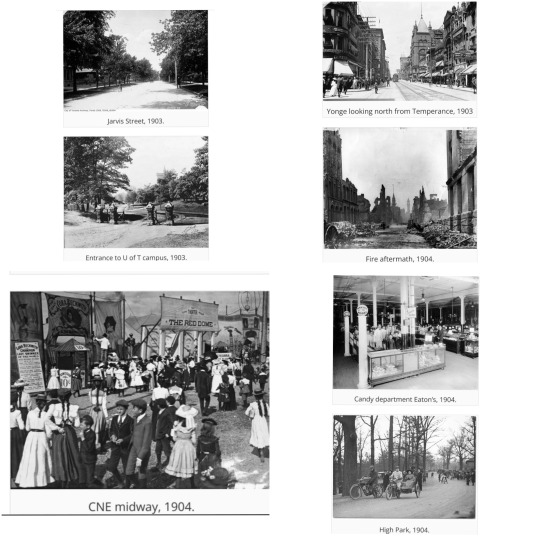

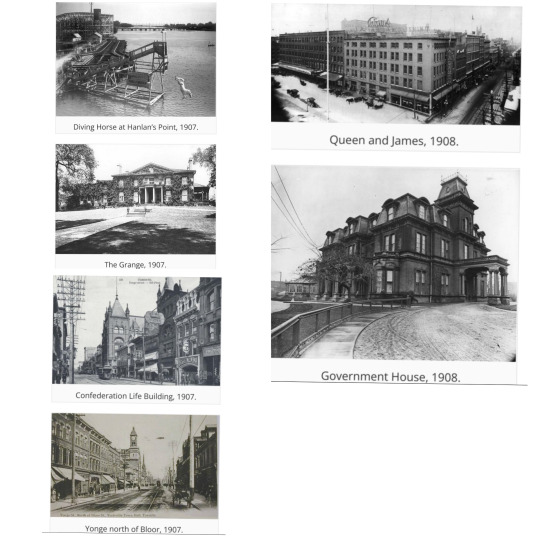


(Photo credit: City of Toronto Archives / BlogTO / Wikimedia Commons / Britannica / Flickr).
Updated on: February 6, 2023
#Toronto#1900s#20th century#Great Toronto Fire of 1904#Victorian architecture#Annex Style House#19th century#Great Depression of the 1930s#Rare Historical Photos#vintage photos#Victorian houses
14 notes
·
View notes
Text

Most Popular And Iconic Home Design Styles - Colonial Style (1876)
---
Source: PartSelect
#colonial#colonial style#1800s#1870s#19th century#art history#history#architecture#architects#architectural
1 note
·
View note
Text

#The opera was built in the middle of the 19th-century#and it’s a stunning architectural combination between Renaissance and Baroque styles#dotted with Corinthian pillars which are typical to the Greek Classical Revival movement.
0 notes
Text
So, Wizarding Robes
I saw this post by @iamnmbr3 and @kittenjammer talking about wizarding fashion and I wanted to talk about this for a while, so I'm going to give my own two cents on it based on fashion history. I love history in general, but fashion history and historical architecture are two I’m incredibly passionate about. So, here we go (post with a lot of pictures ahead):
When I read the books and they mentioned unisex “robes” which function like dresses in a way (as you don’t have to be wearing trousers beneath them:
James whirled about; a second flash of light later, Snape was hanging upside down in the air, his robes falling over his head to reveal skinny, pallid legs and a pair of graying underpants.
(OotP, 647)
And described as being very colorful and billowing, often accompanied by a pointed wizard hat, it was clear to me JKR was trying to invoke the image of the classic fantasy wizard robe:

Especially when it comes to Dumbledore.
The thing is, this style is based on a real historical period and historical styles of the medieval period in Europe.
Medieval Europian Robes
When I'm thinking about the "classic fantasy wizard look" the first historical period that comes to my mind is the 15th century and I'll illustrate why.
Spesificly, the 14th and 15th centuries houppelande. It was a long over garment that looked kinda like a dress with wide, flaring sleeves available for both men and women in various shapes, cuts, and even patterns. Here are examples of some houppelandes:
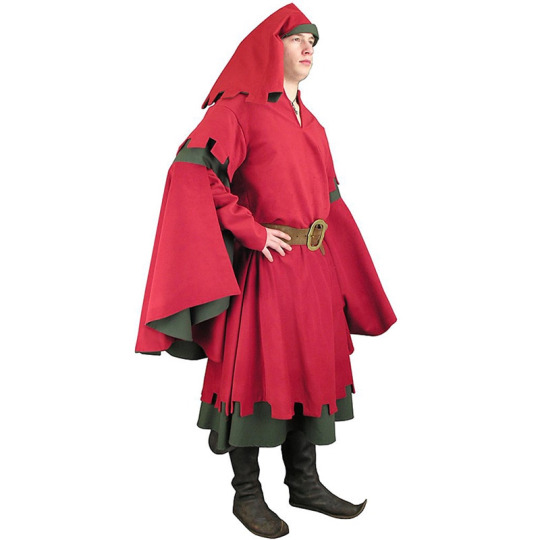
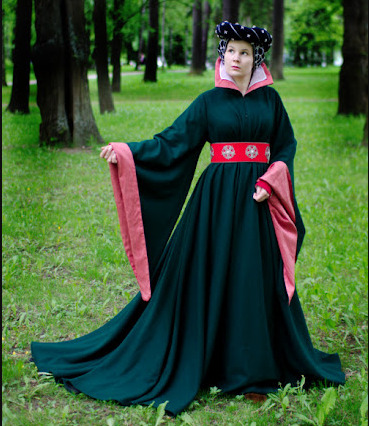




(As you can also see, early 15th-century fashion comes built-in with silly hats! Just like wizards)
In the 15th century you also have a wide array of cuts of cloaks (and even more silly hats!):
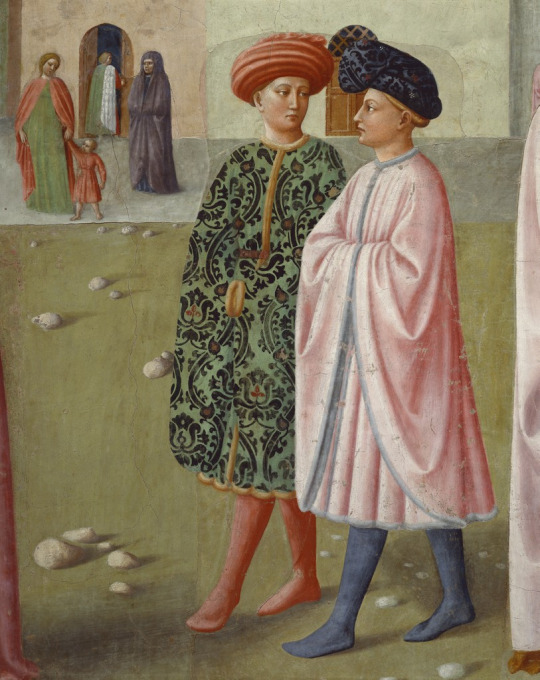
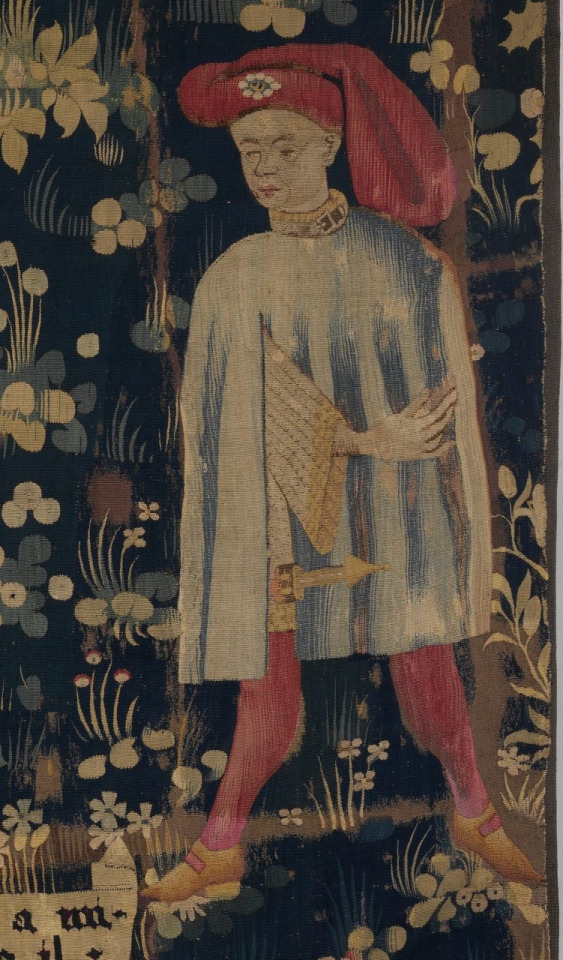
Along with surcoats, that contrary to their name, weren't just for knights to signify on their armor the house they serve:
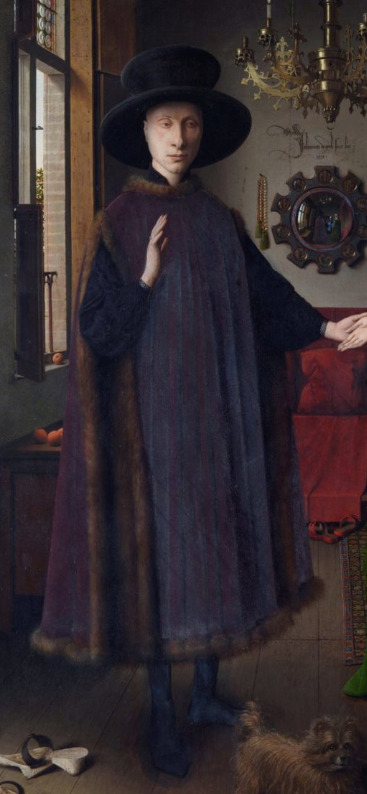

These 15th-century garments are exactly like wizard fashion is described in the books: billowing robes, colorful and eye-catching, and accompanied by silly hats.
The thing is, all these garments are from the high medieval period and as wizards broke away from muggles only when the Statute of Secrecy was enacted, I'd expect their fashion to follow the muggle trend up to that point and then start diverging. Even the most pure-blooded wizarding families of the modern day, like the Malfoys, integrated with muggle circles up until the Statue of Secrecy, something that would've forced them to dress like the muggles at the time to blend in better.
As the Status of Secrecy was first enacted in 1692, it's time to talk about:
Late 17th Century Fashion
Now, while the high middle ages in Europe had everyone wearing essentially wizard robes and silly hats on the regular, the Statue of Secrecy was enacted much later. Fashion in the 17th century was drastically different from the earlier one mentioned above.
In the late 17th century, this is the kind of dress I'd expect from women in England:
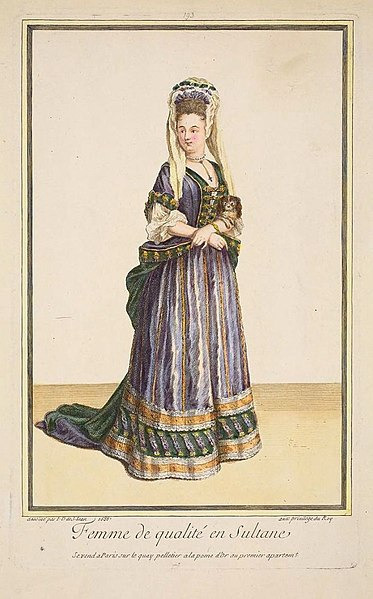
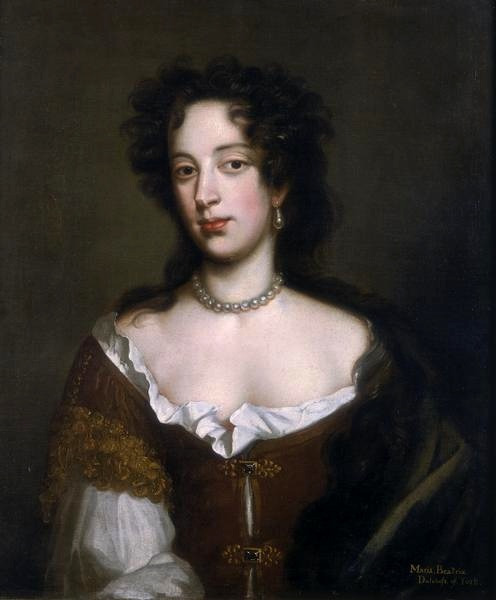
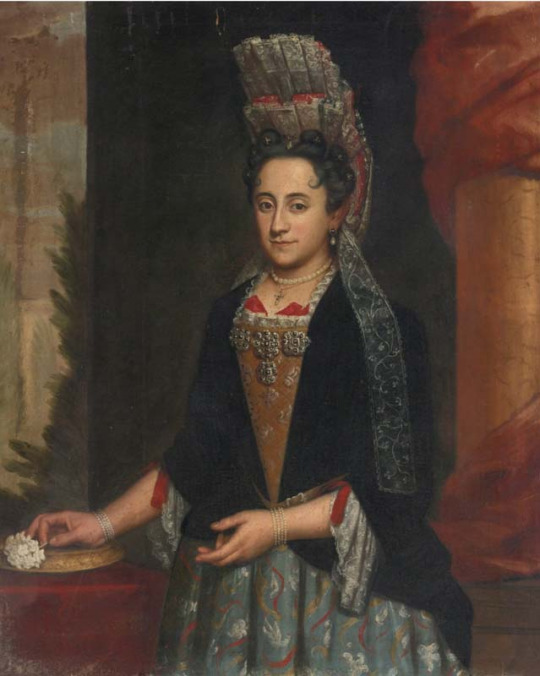

And this is what I'd expect from men:


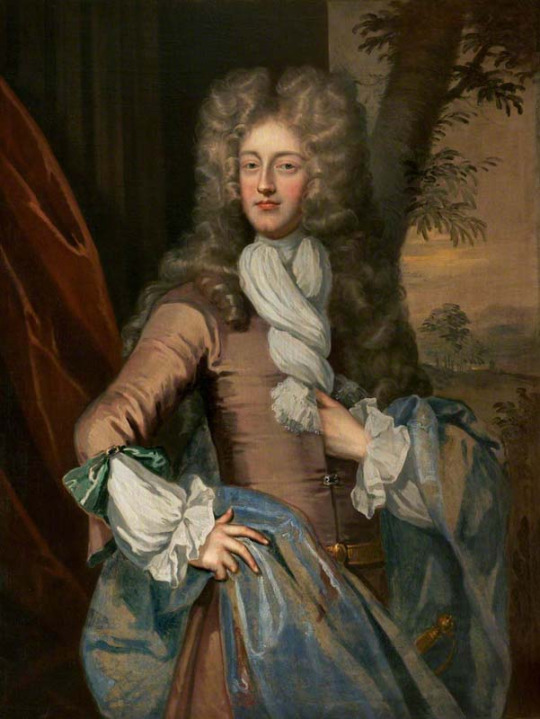
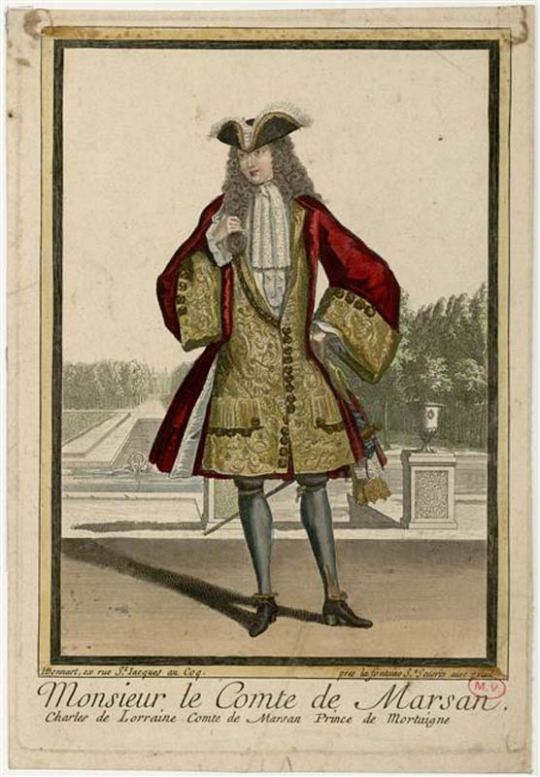
Which is very different from what is described but would've been the historical basis the wizards would work from.
So what do I think wizarding fashion is actually like?
Well, since the books are in the 1990s and wizards don't really live in a vacuum we know some later influences in fashion did make it in. So, I think wizarding fashion is an odd mix of 15th-century and late 17th-century fashions updated to the time period the wizard grew up in, hence distinct fashion changes between generations like we see in the muggle world.
We see these distinct generational fashion changes with characters like Agusta Longbottom who wears a Vulture hat. These sorts of hats with real birds on them were a thing historically. They were quite fashionable in the late Victorian era, which is when Agusta would've been a child if she's around Dumbledore's age:


Fudge is described as wearing a Bowler Hat, a kind of hat that started catching on in the late 19th century but was still a staple in menswear into the early 20th century, hence indicating Fudge's age.
Ron's yule ball dress robes are described as old-fashioned, again indicating fashions in the wizarding world change at a similar rate to the muggle one. Note that since the 17th century, fashion has been changing quite rapidly and by the 18th century fast fashion where you need to buy new garments each "season" has already started becoming a thing. With all that, I think wizard fashion indeed changes just as rapidly as the muggle one.
Now, that's great, and all, but, what would that odd mish-mash fashion even look like?
Well, I made a few very quick sketches as concept examples for what casual wizarding fashion in the UK might look like if we're working off historical references:
(not my best pieces, it's just to get the concept across)


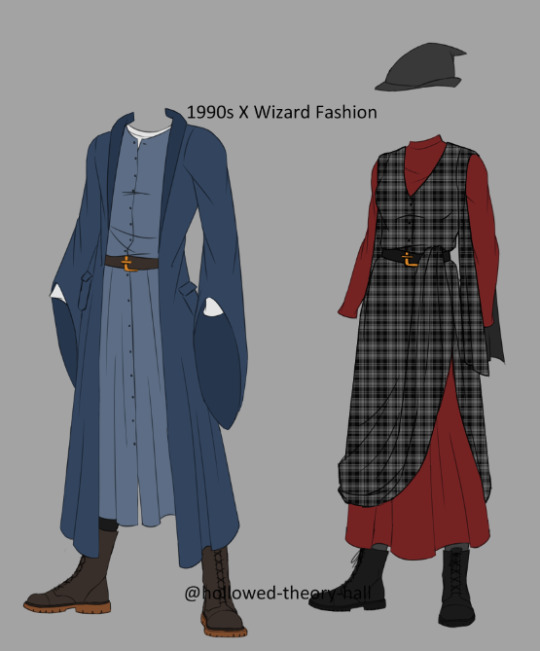
Note that Wizengamot robes and other formal professional wear would probably be older in style and closer to 17th-century fashions.
#harry potter#hp#harry potter thoughts#wizarding world#hp meta#hp headcanon#wizarding fashion#wizarding society#harry potter meta#harry potter headcanon#hollowedtheory#hollowedheadcanon#hollowedart#hollowed hp redesign
274 notes
·
View notes
Text


Thanks to m-33-pmeep for finding this fantastic 18th century French country farmhouse intertwined with a 19th century midwestern style barn and 21st century contemporary glass. It's in Grand Lake, CO, has 5bds, 5ba, and is listed for $3.95M.

The architectural design is superb. The glass surrounds the original historic stone home, so it's like bringing the outdoors in and you can enjoy the exterior, as well as the interior.


This is the kitchen on the ground level and of course, since it's a $4M home, I wouldn't expect anything less than a red AGA stove. This model is about $6,900.

Isn't the pizza oven fantastic?

Such a beautiful home.

There's a cozy sitting area with a door to the patio.

There's a lovely view of Grand Lake from the patio.

Going up to the next level.


There's another, smaller kitchen., and look at that original old floor.

This bedroom has a beautiful view of the lake and a terrace.


This bedroom is right on the loft over the main floor.


One of the baths, combining modern with the historic.


The stairs are incredible, going up to the glass roof.

Nice little place to chill at the top of the silo.


Continuing up to the top floor, there's a great bedroom with a large screen and pool table.

The 2 barns.

There are some cute features in the garden.

The lot is 1.11 acres.

Look at the boat slips- they're like garages.
https://www.zillow.com/homedetails/2210-Grand-Ave-Grand-Lake-CO-80447/316879553_zpid/?
179 notes
·
View notes
Text

Schloss Drachenburg, Königswinter, Germany,
Photo by @world_walkerz
#art#design#architecture#history#luxury lifestyle#style#luxury house#luxury home#castle#schloss#schloss drachenburg#germany#konigswinter#world walkerz#19th century#neoclassical
2K notes
·
View notes
Text










Bahia Palace, a 19th century palace in Marrakech. It was built by an Alawi sultan in 1860, and is full of gorgeous courtyards, gardens, stained-glass windows, chandeliers, fountains, fruit trees, and bathhouses, in a labyrinthine Islamic architectural style.
102 notes
·
View notes
Text




Art Nouveau house from 1899 in Brussels, Belgium, designed by Belgian painter and architect William (Guillaume) Jelley (1856-1932).
📸: admirable-facades.brussels
#dark academia#light academia#academia aesthetic#classical#academia#escapism#classic literature#books#books and libraries#architecture#building#historical#old#art nouveau#style#design#house#1800s#19th century#1899#brussels#belgium#royalcore#cottagecore#aesthetic#artistic#tumblr#mood#vibe#academic
49 notes
·
View notes
Text


A Spanish late 19th/early 20th century Nasrid Revival bone inlaid and parquetry cylinder desk
Inlaid with assorted intricate geometric shapes, patterns and motifs comprised of chequered tesserae, the open arcaded superstructure interspersed with six ring turned columns, above a cylinder roll top enclosing an architectural recess flanked by six drawers, with one frieze drawer below, over a multiple raised panelled front flanked by Nasrid style columns, with three inlaid inscriptions, one of which reads: 'la ghalib ill Allah',
Bonhams
192 notes
·
View notes
Text
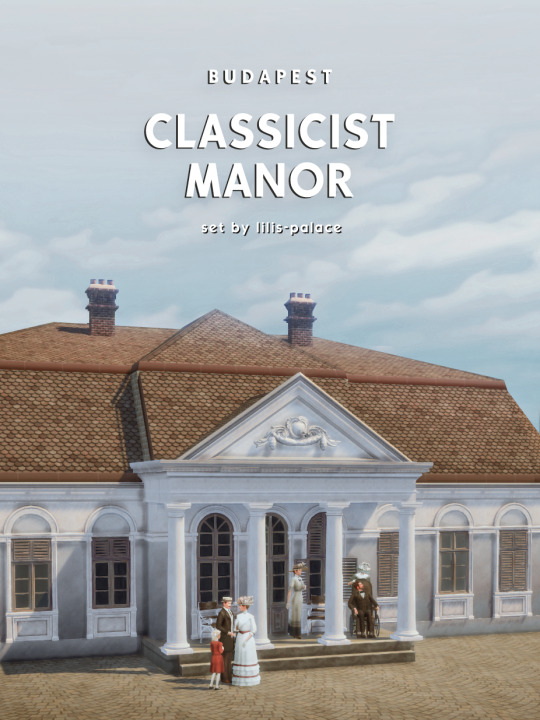
BUDAPEST - CLASSICIST MANOR SET
⚪ 46 carefully designed items
Build your dream manor in classicist style.
⚪ Set compatibility
All items are base game compatible. Find them in your game by typing in the search-box either “lilis palace”, “BUDAPEST” or “Classicist Manor”.
⚪ Recommended sets
Biedermeier Set
Neoclassical Set
Timeless Windows & Doors
DOWNLOAD LINK BELLOW THE CUT!


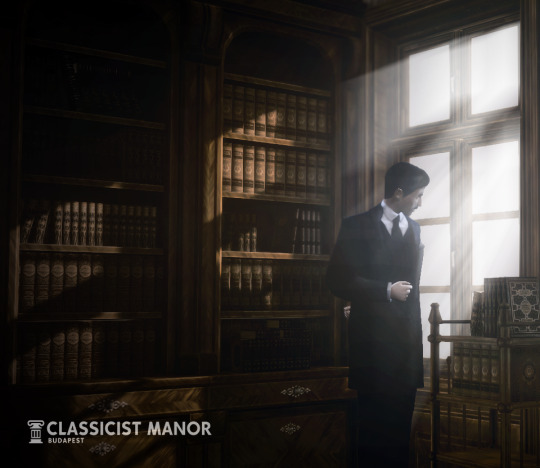

A LITTLE GUIDE TO HUNGARIAN CLASSICIST MANORS
Classicism was the dominant style in the architecture of the Kingdom of Hungary from the early 19th century until the 1850s.
These manors in Hungary are usually composed of a few simple geometric elements. The façades are characterised by a uniform overall appearance without corner avant-corps, a calm, horizontal division with rows of windows and repeating motifs. Representativeness is expressed by the central avant-corp, most often crowned by a porch-like, colonnaded, triangular pediment or balcony.
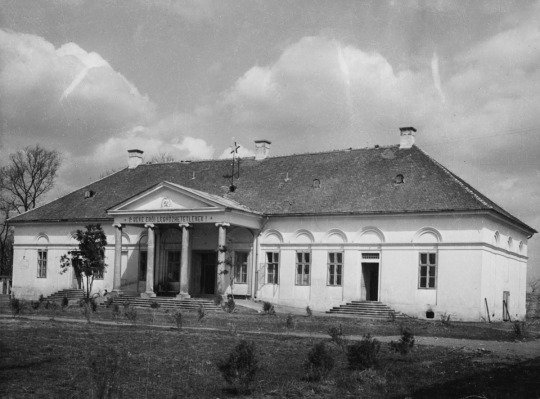
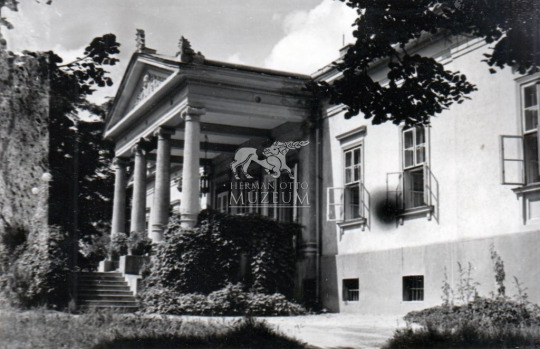

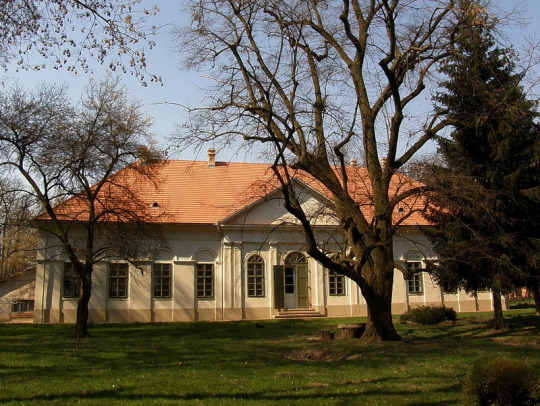
DOWNLOAD: Patreon (Early Access until 2023/04/01)
#ts4 build cc#ts4 cc#ts4 download#ts4 maxis match#ts4 historical cc#ts4 buy cc#ts4 history challenge#BUDAPEST
834 notes
·
View notes